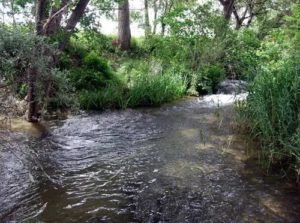
And on the Sabbath day we went outside the gate [of Philippi] to a riverside, where we were supposing that there would be a place of prayer (proseuchē); and we sat down and began speaking to the women who had assembled. Acts 16:13 (Underline added.)
The Prayer-House at Philippi
One thing that baffles me as I read commentaries on Acts 16:13 is that some people are still unsure what this ‘place of prayer’ (proseuchē) refers to.[1] In my own reading of both primary and secondary texts I have come across the word proseuchē more than a few times, where it is typically used as a synonym for “synagogue”. In particular, it refers to a building where Jews gathered.
In sources from the Second Temple period proseuchē is the most common word used to describe a synagogue building whereas the word synagōgē may indicate a congregation, an assembly, as well as a building or a place of assembly. It is not clear why authors prefer one word to the other, or use the two words alternately . . .”[2]
Luke uses the word proseuchē in Acts 16:13, and again in Acts 16:16, for the Jewish prayer-house in Philippi. Elsewhere in Acts, Luke uses the Greek word synagōgē (e.g. Acts 17:1).
Proseuchē occurs in Greek literature[3] and in Greek inscriptions[4] where it refers to a building belonging to, or being used by, the Jews of the Diaspora (i.e. Jews who live outside of the land of Israel).[5] Considering the word’s use, I have little doubt that when Paul and his colleagues arrived in Philippi, they went to the river looking for a Jewish meeting place. According to the book of Acts, Paul typically began his missionary work in each new city by going to the local synagogue, and many synagogues (including the prayer-house in Philippi) were built near sources of water, such as rivers, to facilitate ritual washings and baptisms.[6] Continue reading Lydia and the “Place of Prayer” at Philippi
